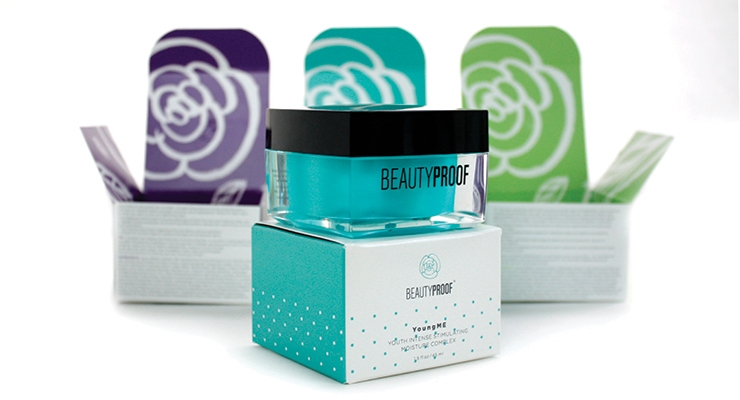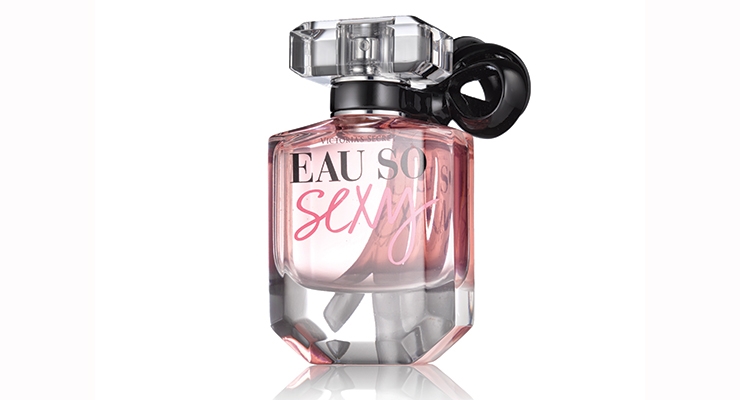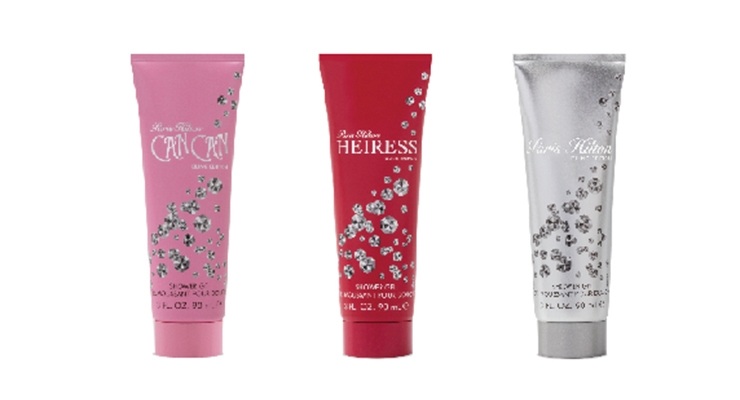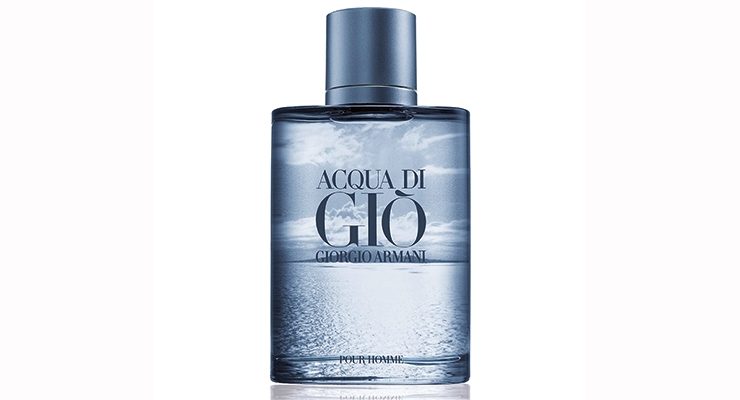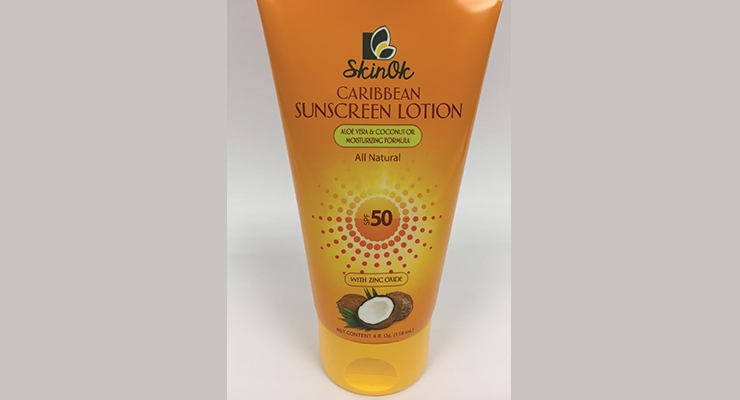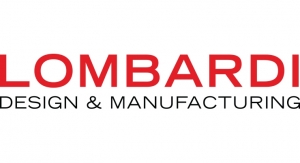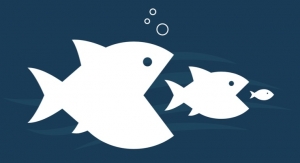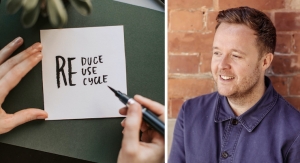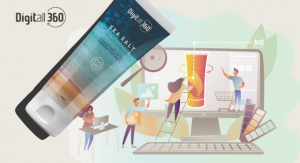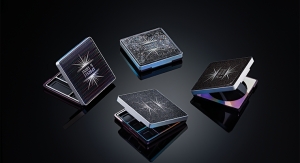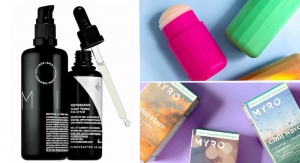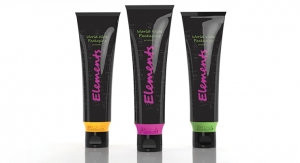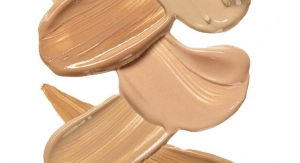Joanna Cosgrove, Contributing Editor03.03.17
The intense competition in the beauty and personal care market means speed to market is critical. Advancements like digitally aided printing and decorating, on-demand cartoning and precision prototyping have been a boon to small and large brands alike, slashing production times and improving the cost-effectiveness associated with taking a product from concept to reality.
In the realm of componentry production, Jack Albanese, director of new business development, Lombardi Design & Manufacturing, Freeport, NY, distinctly remembers the beginning of packaging’s digital era. “Twenty-seven years ago, we called it Rapid Prototyping; today it’s called 3D printing,” he says, recalling that early digital designs were “grown” in layers of paper that ended up feeling like wood. “Today, we’re creating digital files that become translucent or colored representations of the package to-be. Even our models of bottles can be filled and crimped, providing a functioning, lifelike fragrance package.”
Lombardi’s development and production of fragrance caps with organic flowing shapes are now digitally sculpted. “Seeing the creation onscreen and transferring those files ultimately to our mold builders has opened design possibilities that would have taken far longer or cost more to build previously,” Albanese says, pointing to a recent cap the company created for Victoria’s Secret, which challenged Lombardi to create an injection molded ribbon and bow for its Eau So Sexy fragrance package.
“Engineering a molded component in rigid plastic that has the natural form of a soft ribbon was a perfect fit for our technology,” he says. “We were provided with a customer rendering and went on to create the 3D form using an advanced tactual device in our New Package Design Lab. Our design engineer used his artistic creativity to construct the digital shape as the computer program ensures the ultimate form can be reproduced in a steel mold for impeccable injection molding.”
A key piece of the tech-based packaging development program at Barcelona-based Virospack is a 3D printer used in conjunction with Solid Works 3D simulation software. The twofold approach not only improves communication between Virospack and its clients, it also accelerates the company’s ability to rapidly create prototypes, pieces and volumetric models from a design in 24 hours.
The company’s Solid Works program has also helped in the acceleration of development times. “It’s an intuitive tool, also used by many of our clients, which improves the communication between their design department and our technical department,” says Rosa Porras Mansilla, marketing and communications manager. “This allows us to have a greater responsiveness in timing as well as control the entire process of prototyping, thus increasing our in-house [services], a value that certainly sets us apart from other manufacturers of droppers.”
Virospack also incorporates photoliths for in-house digital processing. Mansilla says brands send digital artwork, and then Virospack prints a photolith, or film, of the original which is used to render the artwork with painting, screen printing, hot stamping, metallization, etc. “We control all the processes of decoration—from the photoliths and plotters to the whole range of decoration techniques that Virospack offers to the brands,” she says. “Artificial vison technology also enables us to realize dimensional control of our vials and improve the precise control of our pipettes.”
Virospack recently harnessed its digital technologies to develop, manufacture and decorate a range of products for l’Admirer. Virospack engineered transparent, 30ml bottles with weighted bases to ensure every drop of product could be used by consumers. The bottles are hued in a gradient format according to product type and feature silk screened and hot stamped decoration. A classic Virospack dropper caps off the package, with a white rubber bulb and a silver aluminum cap.
Precision Deco
Harvey R. Levenson, Ph.D., knows a thing or two about the benefits that digital printing technologies have brought to the CPG market. As professor emeritus at Cal Poly State University, San Luis Obispo, CA, Levenson authored a white paper titled, “The Lure of Digital Packaging: A Printing Industry Growth Area.”
“In a competitive market, the product producers want their printing as quickly as possible, at the highest quality, at the lowest cost,” he says. “Additionally, there is increasing pressure for short-run package printing with no inventory storage, hence, no waste, as products rapidly change in content, description, and look. Digital printing, and the software it uses, provides a level of color control and precision that traditional analog printing does not.”
Levenson points to the uptick in use of digital printing technologies across the strata of packaging, spanning not only traditional flat paperboard and label products, but also on tubular and non-flat packages. “Traditional printing systems (with the exception of some screen-printing presses) are not designed for printing on non-flat surfaces. However, digital presses can do this,” he says. “Product developers are increasingly interested in the newest printing technologies that maximize the positive impact of packaging, and deliver packages with a high level of color consistency, with personalization, in short runs, and as quickly as possible. Nearly all of these technologies are digital.”
The evolution of precision digital printing technology has dramatically enhanced Dallas, NC-based CTL Packaging USA’s tube production capabilities. “Not only have we been able to expand color capabilities, but we’ve been able to provide more complex and unique designs, says the company’s Yesenia Calixto-Mendez, commercial assistant. “Digital technology allows us to really lower the standard minimum order quantity (MOQ), [lowering] the minimum to one single tube, and furthermore this results in digital printing being the fastest alternative currently in the market for small or medium runs.”
CTL Packaging utilizes Indigo HP Heptacromic Technology, which boasts a digital offset quality that extends 360 degrees and photographic printing capacities, allowing its customers to submit and develop more intricate, realistic designs. “We can now personalize designs that help individualize each tube with a specific uniqueness such as numbering or labeling with a specific name,” says Calixto-Mendez. “We can develop mosaics which allow for several tubes to make up a complex design.”
Another improvement can be noted in the quicker development dates in the artwork process. We have more flexibility in being able to proof hundreds of color combinations in a single shot. Our color combinations are more quickly and accurately approved with the advantage of using a 7-color process instead of the normal 4-color process.
Decreased lead times mean faster turn-around dates. “Speed-to-Sample is positively improved, since a physical idea of a completed tube is more efficiently and quickly created,” Calixto-Mendez says, noting that development and costs are also significantly more manageable due to improved tooling and the absence of plates.
CTL recently completed work on Parlux’s Paris Hilton Bling Collection, which required precision digital printing to accentuate the shine effect of the diamonds featured on the label. “Our development team was able to experiment with a variety of intricate shades, gradients and varnishes, which allowed our client to pinpoint and reach the level of depth that was needed to get the right feel and look of their product,” explains Calixto-Mendez.
Stoelzle Glass USA, Inc., New York, also enjoys passing along the benefits of flatbed technology-based 2D and 3D inkjet printing and UV-cured ink printing to its beauty clients. “Since we are working from a PDF file and there is no screen, the process is considerably more efficient and faster than regular silk-screen printing,” says the company’s Gregory Grimonprez, technical sales director, USA, adding that the resulting drop in MOQ enables the company to quickly decorate only 1,000 pieces per decoration without significant cost impact due to no required ink or screen change. “New opportunities come from the ability to decorate a real picture in one step onto debossed or embossed areas that pad printing could not achieve in one pass, and multiple passes will create a 3D decoration that can be much more affordable than an embossing into the tool for flankers, promotions or limited editions.”
An example of the company’s digital printing can be seen in a limited-edition bottle design for Giorgio Armani’s iconic Acqua Di Gio fragrance for men. Featuring decoration on the entirety of the bottle surface, the front panel is silk-screened while the back side showcases an inkjet rendering of Mr. Armani’s island. The bottle is finished with a transparent blue overspray. “Without digital printing, it would have been nearly impossible to print on the whole surface and have the picture printed in one pass,” says Grimonprez.
World Wide Packaging LLC, Florham Park, NJ, recently released a new digital printing technology called Direct Flexo Imaging (DFI)—a hybrid flexo transfer printing that can be converted through traditional flexography or full-on digital printing—which it’s using to print on the flexible plastic tubes produced in its Suzhou China tube manufacturing facility.
“DFI offers photographic imaging much like a PS labeled tube or an in-mold labeled tube with much less cost involved,” comments Jim Farley, executive vice president of global business development. “DFI is conducive to high resolution image printing and can be utilized with high SKU proliferation and smaller runs as print frame changeover is seamless as well as application changes.”
Farley feels DFI is the future for direct-decorating tubes, as well as for compacts. The small volume tube was recently produced for Caribbean Sun Lotion utilizing the DFI printing format, and features a rich sunburst fade graphic.
Improving Efficiencies
Another benefit to the rise of digital technologies is the reclaiming of domestic business. “Digital technologies have opened up a new market for short run and very short run (VDP) packaging and a surprising new market of non-commercial packaging,” asserts Robert Tenney, president and CEO, Mid-York Press, Sherburne, NY. “Many people were buying short runs from China but the quality and wait time became a problem.”
Mid-York Press employs a Xerox iGen 150 for inline coating and inexpensive die cutting, which Tenney says has been especially appealing to start-ups and boutique product producers. “It allows us to do short runs faster and at a much lower cost, [and] jobs of less than 1,000 impressions, competitively,” he says.
The company’s XMpie software also allows for designing remotely, even with a customer on a convention floor. “The customer has the short order at their production line oftentimes before they get home from the show,” says Tenney. “Of the 85 leads we had at Cosmoprof, we have had orders from five and are working with another 15, most of them startups and boutique suppliers.”
Digital printing has also proven to be a powerfully efficient and functionally flexible tool for beauty brands with multiple SKUs. “The quantities for products like lipgloss and nail polish are dropping, which makes digital a perfect fit,” says Craig Curran, vice president of sales and marketing, Nosco, Gurnee, IL. “Digital printing also gives the beauty industry maximum choices for high-quality graphics on a multitude of materials. From metallic board to clear labels, digital can print on virtually any substrate.”
Nosco leverages the power of HP Indigo technology to help produce printed packaging that has more consistent quality, tighter color control and the ability to incorporate variable data. “Our digital quality is 99.99% defect-free and we consistently hold our color between 1.5 and 2 Delta E,” Curran says. “Being able to add variable data into the printing process allows our customers to create personalized and unique graphics for their packaging. Every carton or label can have a different image or pattern through the use of HP’s SmartStream Mosaic software.”
Nosco recently executed the cartons for BeautyProof’s 21-product skin care range. The cartons were printed on an HP Indigo 30000 in small runs and feature embossing, a pearlescent coating and two-sided printing.
In November, Nosco launched Sonder, a new brand partnership with Akavit and LCP Complete. Sonder’s focus is to help brands build, launch and promote turnkey, hyper-customized products and packaging systems using a single-source supplier system.
According to the company, today’s consumers crave the ability to personalize products that enrich their lives. Mintel data also points to a parallel path between brands striving to engage consumers on a more personal level and consumers’ expectations for packaging to deliver that experience. “With one in five U.S. Millennials seeking custom or personalized packaging, there is an opportunity for companies to connect with this growing consumer force and gain insights about shopper preferences, in real-time, by offering customization/personalization options,” the company said in a press release.
“After working on several personalized packaging projects, we recognized the need for online customization and order fulfillment services,” says Mindy Wherley, Noscos’ brand strategy manager. “As a means to provide a full-scale custom packaging solution, we partnered with Akavit, a digital marketing agency that specializes in web-based mass customization, and LCP Complete, an agile and experienced fulfillment provider that effectively tracks and ships orders of any size.”
Taiwan-based E Ink Holdings and France-based Texen also announced a recent partnership, with the goal of proliferating customized beauty packaging innovations. The “smart packaging” design concept combines E Ink’s low power, high contrast paper-like display technology with Texen’s packaging expertise to create customizable packaging displays for makeup compacts, perfume bottles and other cosmetic packaging. The E Ink display, powered purely by near field communications (NFC), can be updated by a smartphone that generates radio frequency signals carrying both the information and energy needed to update the display.
The collaboration promises to yield packaging with personalization features; “neuro-cosmetics” that combine well-being and sensorial experiences; and “connected cosmetics” capable of linking packaging with targeted advertising and social media campaigns.
Looking Ahead
In his white paper, Levenson cites a Smithers Pira report which pegged the worth of digitally printed packaging in 2013 to be about $6.6 billion, and forecast that would more than double by 2018, reaching a value of $14.4 billion.
Labels accounted for the nearly 90% of digital printing market share in 2013. “Today, label and packaging converters worldwide invoice over $2 billion annually for the output of their color digital presses,” Levenson writes. “While about 95% of that value is for labels for consumer goods, the folding carton and flexible packaging applications are also growing rapidly through digital printing.”
According to Smithers Pira, analog packaging is growing by about 28% per year, and while that growth is expected to continue through 2018, digitally produced packaging is expected to increase by 375% by 2018. “Digital is not the answer to everything, but manufacturers that are not investing in digital are losing out,” says Jonathan Tarantino, president, Paris Art Label Co., Patchogue, NY, which offers “mosaic” and other digitally personalized options. “Digital makes press proofing, speed to market and special graphics possible.”
In the realm of componentry production, Jack Albanese, director of new business development, Lombardi Design & Manufacturing, Freeport, NY, distinctly remembers the beginning of packaging’s digital era. “Twenty-seven years ago, we called it Rapid Prototyping; today it’s called 3D printing,” he says, recalling that early digital designs were “grown” in layers of paper that ended up feeling like wood. “Today, we’re creating digital files that become translucent or colored representations of the package to-be. Even our models of bottles can be filled and crimped, providing a functioning, lifelike fragrance package.”
Lombardi’s development and production of fragrance caps with organic flowing shapes are now digitally sculpted. “Seeing the creation onscreen and transferring those files ultimately to our mold builders has opened design possibilities that would have taken far longer or cost more to build previously,” Albanese says, pointing to a recent cap the company created for Victoria’s Secret, which challenged Lombardi to create an injection molded ribbon and bow for its Eau So Sexy fragrance package.
“Engineering a molded component in rigid plastic that has the natural form of a soft ribbon was a perfect fit for our technology,” he says. “We were provided with a customer rendering and went on to create the 3D form using an advanced tactual device in our New Package Design Lab. Our design engineer used his artistic creativity to construct the digital shape as the computer program ensures the ultimate form can be reproduced in a steel mold for impeccable injection molding.”
A key piece of the tech-based packaging development program at Barcelona-based Virospack is a 3D printer used in conjunction with Solid Works 3D simulation software. The twofold approach not only improves communication between Virospack and its clients, it also accelerates the company’s ability to rapidly create prototypes, pieces and volumetric models from a design in 24 hours.
The company’s Solid Works program has also helped in the acceleration of development times. “It’s an intuitive tool, also used by many of our clients, which improves the communication between their design department and our technical department,” says Rosa Porras Mansilla, marketing and communications manager. “This allows us to have a greater responsiveness in timing as well as control the entire process of prototyping, thus increasing our in-house [services], a value that certainly sets us apart from other manufacturers of droppers.”
Virospack also incorporates photoliths for in-house digital processing. Mansilla says brands send digital artwork, and then Virospack prints a photolith, or film, of the original which is used to render the artwork with painting, screen printing, hot stamping, metallization, etc. “We control all the processes of decoration—from the photoliths and plotters to the whole range of decoration techniques that Virospack offers to the brands,” she says. “Artificial vison technology also enables us to realize dimensional control of our vials and improve the precise control of our pipettes.”
Virospack recently harnessed its digital technologies to develop, manufacture and decorate a range of products for l’Admirer. Virospack engineered transparent, 30ml bottles with weighted bases to ensure every drop of product could be used by consumers. The bottles are hued in a gradient format according to product type and feature silk screened and hot stamped decoration. A classic Virospack dropper caps off the package, with a white rubber bulb and a silver aluminum cap.
Precision Deco
Harvey R. Levenson, Ph.D., knows a thing or two about the benefits that digital printing technologies have brought to the CPG market. As professor emeritus at Cal Poly State University, San Luis Obispo, CA, Levenson authored a white paper titled, “The Lure of Digital Packaging: A Printing Industry Growth Area.”
“In a competitive market, the product producers want their printing as quickly as possible, at the highest quality, at the lowest cost,” he says. “Additionally, there is increasing pressure for short-run package printing with no inventory storage, hence, no waste, as products rapidly change in content, description, and look. Digital printing, and the software it uses, provides a level of color control and precision that traditional analog printing does not.”
Levenson points to the uptick in use of digital printing technologies across the strata of packaging, spanning not only traditional flat paperboard and label products, but also on tubular and non-flat packages. “Traditional printing systems (with the exception of some screen-printing presses) are not designed for printing on non-flat surfaces. However, digital presses can do this,” he says. “Product developers are increasingly interested in the newest printing technologies that maximize the positive impact of packaging, and deliver packages with a high level of color consistency, with personalization, in short runs, and as quickly as possible. Nearly all of these technologies are digital.”
The evolution of precision digital printing technology has dramatically enhanced Dallas, NC-based CTL Packaging USA’s tube production capabilities. “Not only have we been able to expand color capabilities, but we’ve been able to provide more complex and unique designs, says the company’s Yesenia Calixto-Mendez, commercial assistant. “Digital technology allows us to really lower the standard minimum order quantity (MOQ), [lowering] the minimum to one single tube, and furthermore this results in digital printing being the fastest alternative currently in the market for small or medium runs.”
CTL Packaging utilizes Indigo HP Heptacromic Technology, which boasts a digital offset quality that extends 360 degrees and photographic printing capacities, allowing its customers to submit and develop more intricate, realistic designs. “We can now personalize designs that help individualize each tube with a specific uniqueness such as numbering or labeling with a specific name,” says Calixto-Mendez. “We can develop mosaics which allow for several tubes to make up a complex design.”
Another improvement can be noted in the quicker development dates in the artwork process. We have more flexibility in being able to proof hundreds of color combinations in a single shot. Our color combinations are more quickly and accurately approved with the advantage of using a 7-color process instead of the normal 4-color process.
Decreased lead times mean faster turn-around dates. “Speed-to-Sample is positively improved, since a physical idea of a completed tube is more efficiently and quickly created,” Calixto-Mendez says, noting that development and costs are also significantly more manageable due to improved tooling and the absence of plates.
CTL recently completed work on Parlux’s Paris Hilton Bling Collection, which required precision digital printing to accentuate the shine effect of the diamonds featured on the label. “Our development team was able to experiment with a variety of intricate shades, gradients and varnishes, which allowed our client to pinpoint and reach the level of depth that was needed to get the right feel and look of their product,” explains Calixto-Mendez.
Stoelzle Glass USA, Inc., New York, also enjoys passing along the benefits of flatbed technology-based 2D and 3D inkjet printing and UV-cured ink printing to its beauty clients. “Since we are working from a PDF file and there is no screen, the process is considerably more efficient and faster than regular silk-screen printing,” says the company’s Gregory Grimonprez, technical sales director, USA, adding that the resulting drop in MOQ enables the company to quickly decorate only 1,000 pieces per decoration without significant cost impact due to no required ink or screen change. “New opportunities come from the ability to decorate a real picture in one step onto debossed or embossed areas that pad printing could not achieve in one pass, and multiple passes will create a 3D decoration that can be much more affordable than an embossing into the tool for flankers, promotions or limited editions.”
An example of the company’s digital printing can be seen in a limited-edition bottle design for Giorgio Armani’s iconic Acqua Di Gio fragrance for men. Featuring decoration on the entirety of the bottle surface, the front panel is silk-screened while the back side showcases an inkjet rendering of Mr. Armani’s island. The bottle is finished with a transparent blue overspray. “Without digital printing, it would have been nearly impossible to print on the whole surface and have the picture printed in one pass,” says Grimonprez.
World Wide Packaging LLC, Florham Park, NJ, recently released a new digital printing technology called Direct Flexo Imaging (DFI)—a hybrid flexo transfer printing that can be converted through traditional flexography or full-on digital printing—which it’s using to print on the flexible plastic tubes produced in its Suzhou China tube manufacturing facility.
“DFI offers photographic imaging much like a PS labeled tube or an in-mold labeled tube with much less cost involved,” comments Jim Farley, executive vice president of global business development. “DFI is conducive to high resolution image printing and can be utilized with high SKU proliferation and smaller runs as print frame changeover is seamless as well as application changes.”
Farley feels DFI is the future for direct-decorating tubes, as well as for compacts. The small volume tube was recently produced for Caribbean Sun Lotion utilizing the DFI printing format, and features a rich sunburst fade graphic.
Improving Efficiencies
Another benefit to the rise of digital technologies is the reclaiming of domestic business. “Digital technologies have opened up a new market for short run and very short run (VDP) packaging and a surprising new market of non-commercial packaging,” asserts Robert Tenney, president and CEO, Mid-York Press, Sherburne, NY. “Many people were buying short runs from China but the quality and wait time became a problem.”
Mid-York Press employs a Xerox iGen 150 for inline coating and inexpensive die cutting, which Tenney says has been especially appealing to start-ups and boutique product producers. “It allows us to do short runs faster and at a much lower cost, [and] jobs of less than 1,000 impressions, competitively,” he says.
The company’s XMpie software also allows for designing remotely, even with a customer on a convention floor. “The customer has the short order at their production line oftentimes before they get home from the show,” says Tenney. “Of the 85 leads we had at Cosmoprof, we have had orders from five and are working with another 15, most of them startups and boutique suppliers.”
Digital printing has also proven to be a powerfully efficient and functionally flexible tool for beauty brands with multiple SKUs. “The quantities for products like lipgloss and nail polish are dropping, which makes digital a perfect fit,” says Craig Curran, vice president of sales and marketing, Nosco, Gurnee, IL. “Digital printing also gives the beauty industry maximum choices for high-quality graphics on a multitude of materials. From metallic board to clear labels, digital can print on virtually any substrate.”
Nosco leverages the power of HP Indigo technology to help produce printed packaging that has more consistent quality, tighter color control and the ability to incorporate variable data. “Our digital quality is 99.99% defect-free and we consistently hold our color between 1.5 and 2 Delta E,” Curran says. “Being able to add variable data into the printing process allows our customers to create personalized and unique graphics for their packaging. Every carton or label can have a different image or pattern through the use of HP’s SmartStream Mosaic software.”
Nosco recently executed the cartons for BeautyProof’s 21-product skin care range. The cartons were printed on an HP Indigo 30000 in small runs and feature embossing, a pearlescent coating and two-sided printing.
In November, Nosco launched Sonder, a new brand partnership with Akavit and LCP Complete. Sonder’s focus is to help brands build, launch and promote turnkey, hyper-customized products and packaging systems using a single-source supplier system.
According to the company, today’s consumers crave the ability to personalize products that enrich their lives. Mintel data also points to a parallel path between brands striving to engage consumers on a more personal level and consumers’ expectations for packaging to deliver that experience. “With one in five U.S. Millennials seeking custom or personalized packaging, there is an opportunity for companies to connect with this growing consumer force and gain insights about shopper preferences, in real-time, by offering customization/personalization options,” the company said in a press release.
“After working on several personalized packaging projects, we recognized the need for online customization and order fulfillment services,” says Mindy Wherley, Noscos’ brand strategy manager. “As a means to provide a full-scale custom packaging solution, we partnered with Akavit, a digital marketing agency that specializes in web-based mass customization, and LCP Complete, an agile and experienced fulfillment provider that effectively tracks and ships orders of any size.”
Taiwan-based E Ink Holdings and France-based Texen also announced a recent partnership, with the goal of proliferating customized beauty packaging innovations. The “smart packaging” design concept combines E Ink’s low power, high contrast paper-like display technology with Texen’s packaging expertise to create customizable packaging displays for makeup compacts, perfume bottles and other cosmetic packaging. The E Ink display, powered purely by near field communications (NFC), can be updated by a smartphone that generates radio frequency signals carrying both the information and energy needed to update the display.
The collaboration promises to yield packaging with personalization features; “neuro-cosmetics” that combine well-being and sensorial experiences; and “connected cosmetics” capable of linking packaging with targeted advertising and social media campaigns.
Looking Ahead
In his white paper, Levenson cites a Smithers Pira report which pegged the worth of digitally printed packaging in 2013 to be about $6.6 billion, and forecast that would more than double by 2018, reaching a value of $14.4 billion.
Labels accounted for the nearly 90% of digital printing market share in 2013. “Today, label and packaging converters worldwide invoice over $2 billion annually for the output of their color digital presses,” Levenson writes. “While about 95% of that value is for labels for consumer goods, the folding carton and flexible packaging applications are also growing rapidly through digital printing.”
According to Smithers Pira, analog packaging is growing by about 28% per year, and while that growth is expected to continue through 2018, digitally produced packaging is expected to increase by 375% by 2018. “Digital is not the answer to everything, but manufacturers that are not investing in digital are losing out,” says Jonathan Tarantino, president, Paris Art Label Co., Patchogue, NY, which offers “mosaic” and other digitally personalized options. “Digital makes press proofing, speed to market and special graphics possible.”

